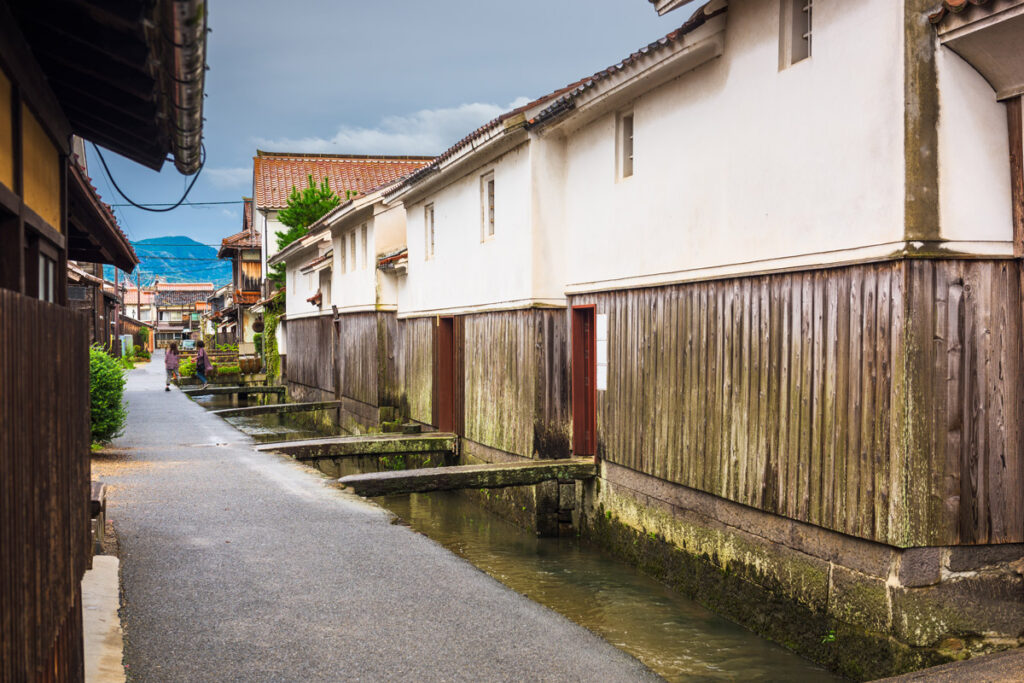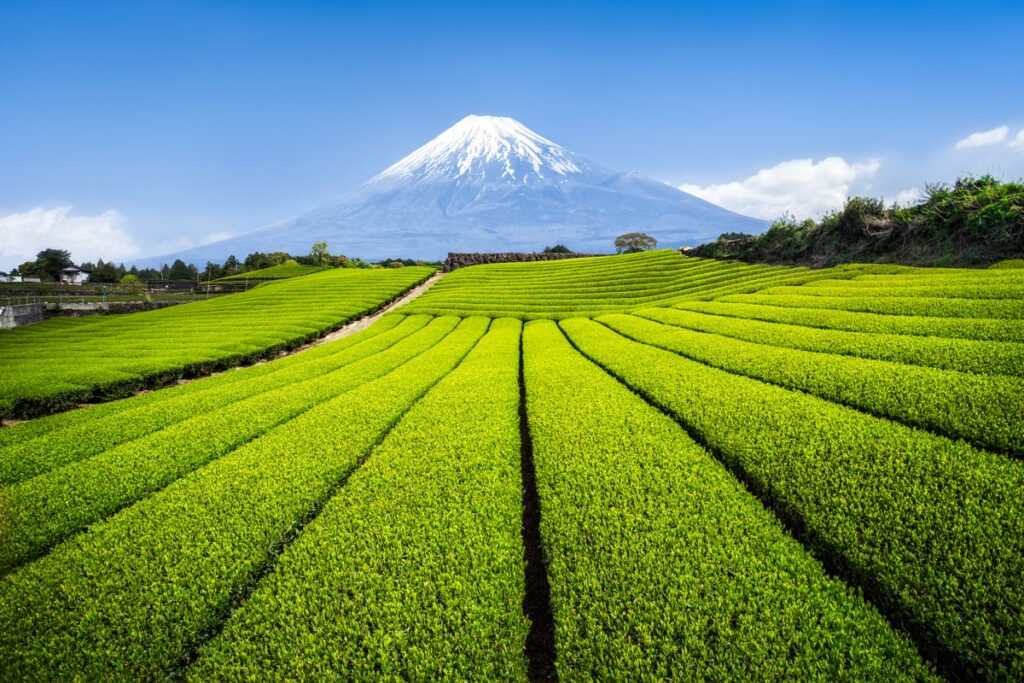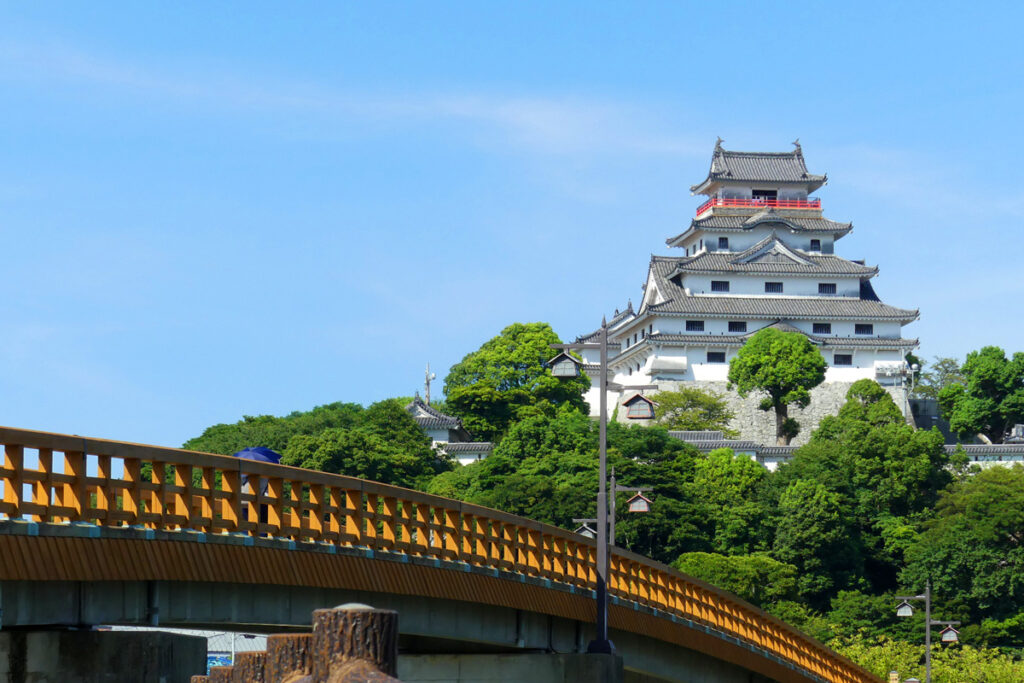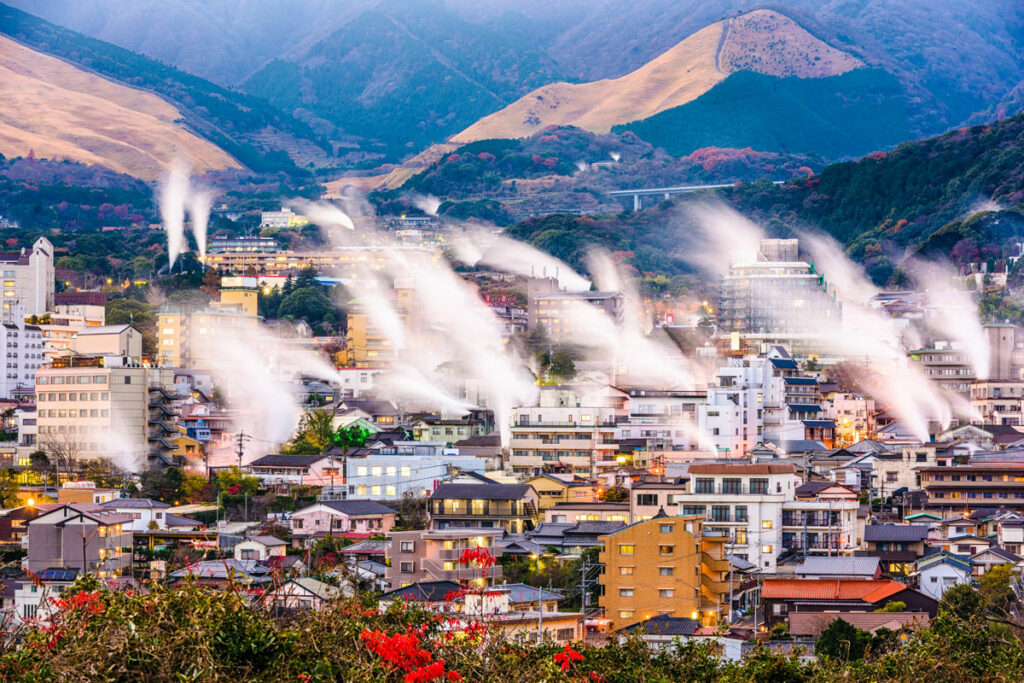Japan is a country rich in culture and history, with a diverse range of landmarks and monuments that have been recognized by UNESCO as World Heritage sites. From ancient temples and shrines to natural wonders and industrial sites, these places offer a glimpse into the country’s unique past and present. In this post, we will be exploring the top 12 UNESCO World Heritage sites in Japan that should be on every traveler’s bucket list. From the iconic Hiroshima Peace Memorial to the hidden Christian sites in Nagasaki, these sites are not only historically significant but also visually stunning. With this guide, you’ll be able to plan an itinerary that takes you on a journey through Japan’s cultural heritage, and it’s a perfect way to learn about the country’s past and present.
- 1. Historic Monuments of Ancient Kyoto
- 2. Hiroshima Peace Memorial (Genbaku Dome)
- 3. Itsukushima Shinto Shrine
- 4. Himeji Castle
- 5. Hidden Christian Sites in The Nagasaki Region
- 6. Shrines and Temples of Nikko
- 7. Gusuku Sites and Related Properties of the Kingdom of Ryukyu
- 8. Tomioka Silk Mill
- 9. Yakushima
- 10. Shirakami-Sanchi
- 11. Iwami Ginzan Silver Mine
- 12. Shirakawa-go village
1. Historic Monuments of Ancient Kyoto
This UNESCO World Heritage site includes 17 locations in Kyoto, Uji, and Otsu Cities, including the famous Kinkaku-ji Temple and Ryoan-ji Temple.

The Historic Monuments of Ancient Kyoto is a UNESCO World Heritage site that encompasses 17 locations in Kyoto, Uji, and Otsu Cities. This site showcases the rich cultural heritage of Kyoto, one of the most historic cities in Japan and the former capital of the country. These monuments have been designated as World Heritage sites due to their outstanding architectural, artistic, and historical significance. One of the most iconic locations within this site is Kinkaku-ji Temple, also known as the Golden Pavilion. This temple is a fine example of Muromachi period architecture and is covered in gold leaf, making it a stunning sight to behold. The temple’s reflection in the pond surrounding it creates a beautiful and serene atmosphere. Kinkaku-ji Temple is also known for its beautiful gardens and the many different types of Japanese plants that are grown there.
Here is our 12 Top-Rated Things to do in Kyoto. Another must-see location within the Historic Monuments of Ancient Kyoto is Ryoan-ji Temple, known for its famous rock garden. The garden is said to symbolize the universe and is considered one of the most famous Zen gardens in Japan. Visitors can spend hours contemplating the garden, trying to find the meaning behind the arrangement of rocks. These sites are not only historically significant, but they are also visually stunning and offer a glimpse into the rich cultural heritage of Japan.
2. Hiroshima Peace Memorial (Genbaku Dome)
Hiroshima Peace Memorial (Genbaku Dome) serves as a reminder of the devastation of the atomic bombing of Hiroshima in 1945 and is a symbol of peace and a call for the abolition of nuclear weapons.

The Hiroshima Peace Memorial, also known as the Genbaku Dome, is a UNESCO World Heritage site that serves as a reminder of the devastation caused by the atomic bombing of Hiroshima in 1945. The bombing, which took place on August 6, 1945, killed over 140,000 people and injured many more. The Genbaku Dome is the only building that remains standing in the area that was directly hit by the bomb, and it serves as a powerful symbol of the destructive power of nuclear weapons. The Genbaku Dome is located in the Hiroshima Peace Memorial Park, which was established in 1949 to commemorate the victims of the bombing and to promote world peace.
The park includes a number of monuments and memorials, including the Children’s Peace Monument, which was built to honor the children who died as a result of the bombing. The Hiroshima Peace Memorial Museum is also located in the park, which displays a collection of artifacts, photographs, and other materials that tell the story of the bombing and its aftermath. The Hiroshima Peace Memorial is not only a reminder of the tragedy that occurred in the past but also serves as a call for the abolition of nuclear weapons. The site is a must-visit for anyone who is interested in learning about the history of the bombing and the ongoing efforts to promote peace and nuclear disarmament. Here is our Top 12 Places to visit in Hiroshima.
Official Website: https://www.city.hiroshima.lg.jp/
Address: 1-10 Otemachi, Naka Ward, Hiroshima, 730-0051
Reviews Visit: TripAdvisor
3. Itsukushima Shinto Shrine
Itsukushima Shinto Shrine located on Miyajima Island, this shrine is famous for its “floating” torii gate that appears to be floating on the water during high tide.

The Itsukushima Shinto Shrine, located on Miyajima Island, Hiroshima Prefecture, is a UNESCO World Heritage site that is famous for its striking “floating” torii gate. The torii gate is a traditional Japanese gate that marks the entrance to a Shinto shrine, and this one is unique in that it appears to be floating on the water during high tide. This creates a beautiful and serene atmosphere that is unique to this shrine. The Itsukushima Shinto Shrine was built in the 12th century and is dedicated to the goddesses of the sea and the mountains. The shrine is built on the water, with the main hall of the shrine being constructed on pilings in the sea.
Visitors to the Itsukushima Shinto Shrine can enjoy the beautiful natural surroundings of Miyajima Island, which is known for its beautiful forests and wildlife. The island is also home to a number of other temples and shrines, including the Daisho-in Temple, which is known for its beautiful gardens and statues. Visitors can also take a boat ride around the shrine and take in the beautiful views of the torii gate and the shrine complex. The best time to visit is during high tide when the gate appears to be floating on the water. The shrine is also beautifully lit up during the night, which makes it a popular spot for photographers.
Official Website: http://www.en.itsukushimajinja.jp/index.html
Address: 1-1 Miyajimacho, Hatsukaichi, Hiroshima 739-0588
Reviews Visit: TripAdvisor
4. Himeji Castle
Himeji Castle Known as the “White Heron Castle” due to its white exterior, Himeji Castle is considered one of Japan’s most beautiful castles and is a fine example of feudal-era architecture.

Himeji Castle, also known as the “White Heron Castle,” is a UNESCO World Heritage site that is considered one of Japan’s most beautiful castles. The castle is located in the city of Himeji in Hyogo Prefecture and is a fine example of feudal-era architecture. The castle is also known for its complex and sophisticated defensive systems that were built to protect it from invasion. The castle was built in the 14th century and has undergone several renovations over the centuries. The current structure is a combination of various architectural styles from different periods, including the Momoyama and Edo periods. The castle’s main keep is a three-story structure with a steeply sloping roof and is considered one of the best examples of Japanese castle architecture.
Visitors to Himeji Castle can explore the castle’s grounds, which include a number of defensive structures such as watchtowers, gates, and moats. The castle is also home to a number of museums and exhibitions that provide information about the castle’s history and its role in Japan’s feudal period. Visitors can also enjoy the beautiful views of the castle and the surrounding city from the top of the castle’s keep.
Official Website: https://www.city.himeji.lg.jp/castle/index.html
Address: 68 Honmachi, Himeji, Hyogo 670-0012
Reviews Visit: TripAdvisor
5. Hidden Christian Sites in The Nagasaki Region
Hidden Christian Sites in the Nagasaki Region includes a collection of underground churches and other religious sites that were built by Japanese Christians who practiced their faith in secret during the period of persecution in the 17th century.

The Hidden Christian Sites in the Nagasaki Region is a UNESCO World Heritage site that includes a collection of underground churches and other religious sites that were built by Japanese Christians who practiced their faith in secret during the period of persecution in the 17th century. The site is located in the Nagasaki region of Japan and is a testament to the resilience and determination of Japanese Christians who risked their lives to practice their faith.
Another notable site is the Sofuku-ji Temple, which is the oldest Christian temple in Japan. This temple was built in the early 17th century and was used as a place of worship for Japanese Christians. The temple was also a place where Christians could gather in secret and practice their faith without fear of persecution. The Hidden Christian Sites in the Nagasaki Region also include other religious sites, such as the Omura Church, which is known for its beautiful frescoes and stained glass windows. The site offers a powerful reminder of the importance of freedom of religion and the sacrifices made by those who fought for it.
Official Website: https://kirishitan.jp/en
Reviews Visit: TripAdvisor
6. Shrines and Temples of Nikko
Shrines and Temples of Nikko is a UNESCO World Heritage site includes the Nikko Toshogu Shrine, a complex of temples and shrines that was built in the 17th century to honor the shogun Tokugawa Ieyasu.

The Shrines and Temples of Nikko is a UNESCO World Heritage site that includes a complex of temples and shrines that were built in the 17th century to honor the shogun Tokugawa Ieyasu. The site is located in the city of Nikko in Tochigi Prefecture and is considered one of the most important cultural heritage sites in Japan.
The most famous of the temples and shrines included in the site is the Nikko Toshogu Shrine, which is dedicated to Tokugawa Ieyasu. The shrine is a masterpiece of Japanese architecture and is known for its intricate carvings and decorations, including the famous “Three Wise Monkeys” sculpture which depicts the “see no evil, hear no evil, speak no evil” principle. It’s a must-see for anyone interested in Japanese culture, history, and architecture. Visitors can also learn about the shogunate period and the role of shoguns in the history of Japan.
Official Website: https://www.visitnikko.jp/en/
Reviews Visit: TripAdvisor
7. Gusuku Sites and Related Properties of the Kingdom of Ryukyu
Gusuku Sites and Related Properties of the Kingdom of Ryukyu is a UNESCO World Heritage site includes the ruins of the castles and fortresses of the Ryukyu Kingdom, which ruled over the southern islands of Japan for several centuries.

The Gusuku Sites and Related Properties of the Kingdom of Ryukyu is a UNESCO World Heritage site that includes the ruins of the castles and fortresses of the Ryukyu Kingdom, which ruled over the southern islands of Japan for several centuries. The site is located on the island of Okinawa and includes a number of important historical sites that were built during the time of the Ryukyu Kingdom.
The Gusuku Sites and Related Properties of the Kingdom of Ryukyu includes a number of important castles and fortresses, such as the Shuri Castle, which was the main castle of the Ryukyu Kingdom and served as the residence of the Ryukyu kings. The site also includes a number of other important historical sites, such as the Nakijin Castle, which is located on the northern part of Okinawa and is known for its impressive stone walls and beautiful views. The Zakimi Castle, is another castle that is included in the site, which is known for its impressive stone walls and beautiful gardens. Visitors can sample local cuisine, witness traditional performing arts, and learn about the customs and practices of the Ryukyu people. If you would like to know more about Okinawa here is our Top 12 Things to do in Okinawa.
Official Website: https://oki-park.jp/shurijo/
Address: 1 Chome-2 Shurikinjocho, Naha, Okinawa 903-0815
Reviews Visit: TripAdvisor
8. Tomioka Silk Mill
Tomioka Silk Mill is a UNESCO world heritage site of Meiji era Silk Mill and one of the most well-preserved silk mills from the Meiji period, which was an important center for the silk industry in Japan.

The Tomioka Silk Mill is located in Gunma, and it is a UNESCO World Heritage site and one of the most well-preserved silk mills from the Meiji period. The mill was built in 1872 and was an important center for the silk industry in Japan during the Meiji era (1868-1912). The Tomioka Silk Mill is located in Tomioka city, Gunma prefecture and it is the first silk reeling factory in Japan that was built with the help of the French technology. The Tomioka Silk Mill is a symbol of Japan’s modernization and its efforts to catch up with the West during the Meiji era. The mill was built to improve the efficiency and productivity of the silk industry in Japan and was an important step in the country’s economic development.
The Tomioka Silk Mill is an architectural masterpiece of the Meiji era, which is a blend of traditional and modern styles. The building was designed with the latest technology of the time and it was built to withstand earthquakes and fire. TVisitors to the Tomioka Silk Mill can learn about the history of the silk industry in Japan and the role of the mill in the country’s modernization. If you would like know more about Gunma here is our 12 Top-Rated Things to do in Gunma.
Official Website: https://www.tomioka-silk.jp/
Address: 1-1 Tomioka, Gunma 370-2316
Reviews Visit: TripAdvisor
9. Yakushima
Yakushima island is home to a diverse range of plant and animal life, including the ancient Yakusugi cedar trees, which are over 1,000 years old.

Yakushima is a UNESCO World Heritage site and an island located in Kagoshima in the southern coast of Japan. The island is known for its diverse range of plant and animal life, including the ancient Yakusugi cedar trees, which are over 1,000 years old. These ancient trees are considered a national treasure and are a symbol of the island’s unique natural beauty. Yakushima is also home to a diverse range of other plant and animal life, including subtropical and temperate rainforests, mangrove swamps, and alpine meadows. The island is also home to a number of rare and endangered species, such as the Yakushima macaque, which is a type of monkey that is found only on the island.
Yakushima is also known for its beautiful beaches and crystal clear waters, which make it a popular spot for swimming and snorkeling. The island also has a number of hot springs, which offer visitors a chance to relax and rejuvenate after a day of exploring. Overall, Yakushima is a unique and beautiful destination that offers visitors a chance to experience the natural beauty and biodiversity of Japan. If you would like to know more about Kagoshima here is our 12 Top-Rated Things to Do in Kagoshima.
Official Website: https://www.yakushimatourism.com/
Address: Yakushima, Kumage District, Kagoshima
Reviews Visit: TripAdvisor
10. Shirakami-Sanchi
Shirakami-Sanchi is a UNESCO World Heritage site includes a mountainous area in northern Honshu that is home to the last remaining virgin beech forest in East Asia.

Shirakami-Sanchi is a UNESCO World Heritage site that includes a mountainous area in northern Honshu, Japan that is home to the last remaining virgin beech forest in East Asia. The site spans across the prefectures of Akita and Aomori and covers an area of approximately 130,000 hectares. The site is a unique example of the natural beauty of Japan and is considered to be one of the most important natural heritage sites in the country.
The Shirakami-Sanchi is known for its beautiful beech forest, which is home to a diverse range of plant and animal life. The forest is made up of over 900 species of plants and animals, including many that are unique to the area. The forest also includes a number of ancient beech trees, some of which are over 400 years old. The site also offers visitors an opportunity to experience the natural beauty of Japan and to learn about the importance of conservation efforts.
Official Website: https://www.experience-shirakami.com/
Address: Kanda-61-1, Nishimeya, Nakatsugaru District, Aomori 036-1411
Reviews Visit: TripAdvisor
11. Iwami Ginzan Silver Mine
Iwami Ginzan Silver Mine is a UNESCO World Heritage site includes the ruins of the Iwami Ginzan Silver Mine, which was one of the most productive silver mines in the world during the 16th and 17th centuries.

The Iwami Ginzan Silver Mine is a UNESCO World Heritage site that includes the ruins of one of the most productive silver mines in the world during the 16th and 17th centuries. The mine is located in the city of Oda, in the Shimane prefecture, Japan and it was a major contributor to the economy of Japan during that time. The mine was in operation for over 400 years, from the 16th century to the 20th century and it is considered to be one of the most important cultural heritage sites in Japan.
It’s a must-see destination for anyone interested in the history of mining, technology, and trade, as well as for those who want to experience the natural beauty of the region.
Official Website: https://www.kankou-shimane.com/en/
Address: 694-0305 Shimane, Oda, Omoricho, イ1597−3
Reviews Visit: TripAdvisor
12. Shirakawa-go village
Shirakawa-go village is a UNESCO World Heritage village in Japan known for its traditional Gassho-style houses, located in the Gifu prefecture of Japan.)

Shirakawa-go is a traditional village located in the Gifu prefecture of Japan, known for its unique Gassho-style houses. These houses are characterized by their steep thatched roofs, which resemble the hands of Buddhist monks in prayer (Gassho in Japanese). The village has been designated as a UNESCO World Heritage site in 1995, for being an exceptional example of an architectural tradition that has been passed down for more than 250 years.
The village is situated in a mountainous area, surrounded by lush forests and clear streams. The Gassho-style houses, many of which are more than 250 years old, are the main attraction of the village. These houses were designed to withstand heavy snowfall, which is common in the area during the winter months. The steep thatched roofs allow the snow to slide off easily, while the thick walls and large eaves provide insulation against the cold. Visitors can also experience the traditional way of life of the local community by visiting the thatched-roof houses that have been converted into museums and guesthouses.
Official Website: https://shirakawa-go.gr.jp/en/
Address: Shirakawa, Ono District, Gifu
Reviews Visit: TripAdvisor
In conclusion, Japan is home to a wealth of cultural and natural heritage sites, and the 12 UNESCO World Heritage sites listed in this blog post are just a small sample of the many amazing places to visit in the country. From the historic temples and shrines of Kyoto, to the stunning natural beauty of Yakushima, there is something for everyone to enjoy in Japan. These sites not only showcase the rich history and culture of Japan but also offer visitors a chance to experience the natural beauty of the country. Visiting these UNESCO World Heritage sites is a great way to learn about Japan’s past and present, and to appreciate the country’s unique blend of history, culture, and nature.
Whether you are interested in history, culture, or nature, these UNESCO World Heritage sites are sure to leave a lasting impression on you. So, we encourage you to add these sites to your travel itinerary and experience the best that Japan has to offer.









